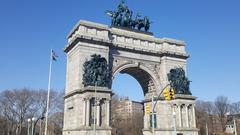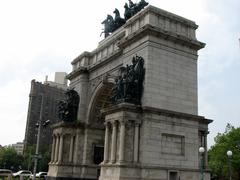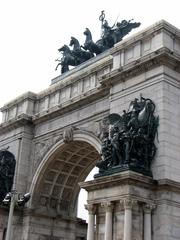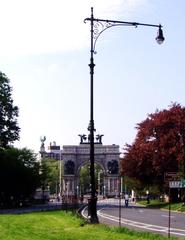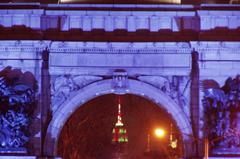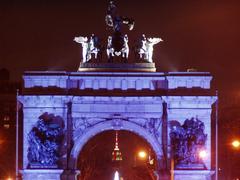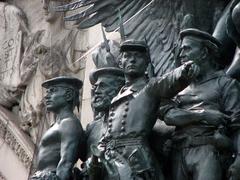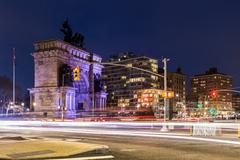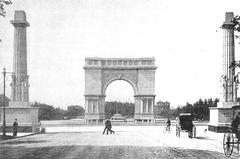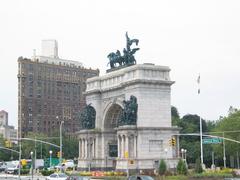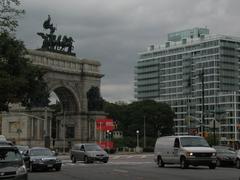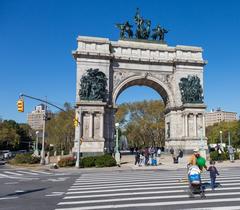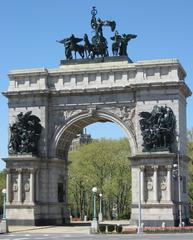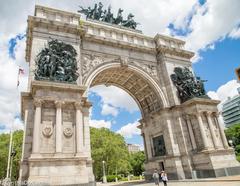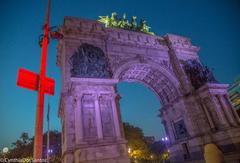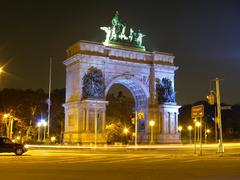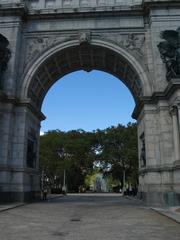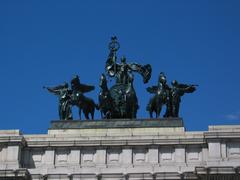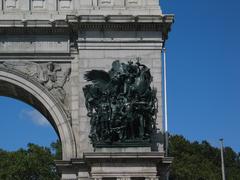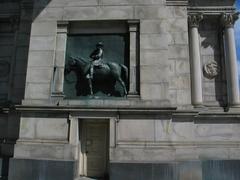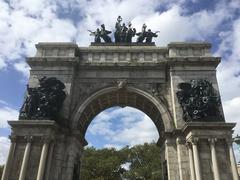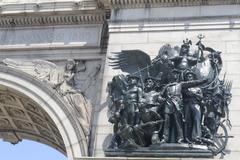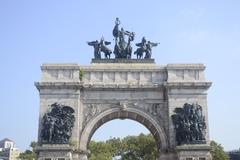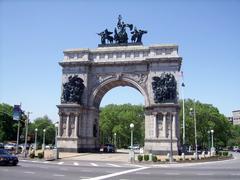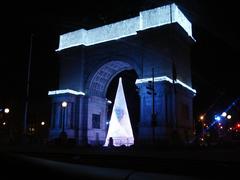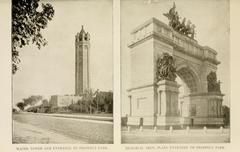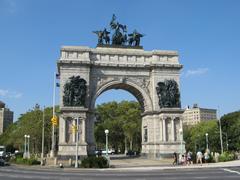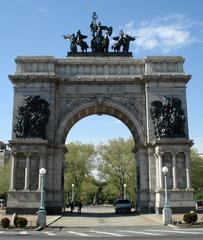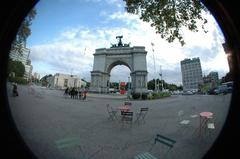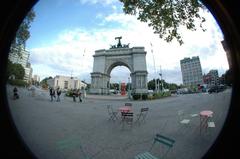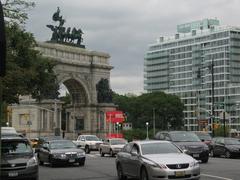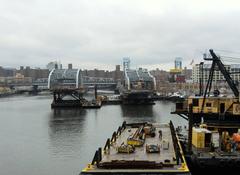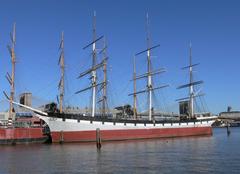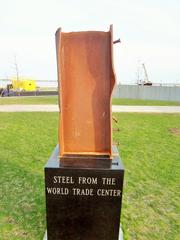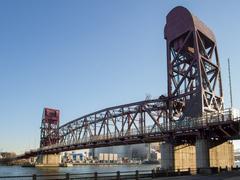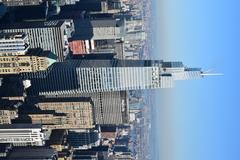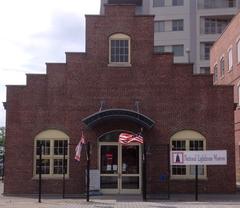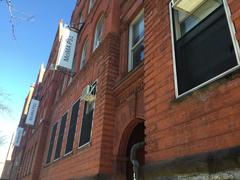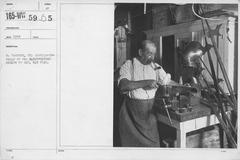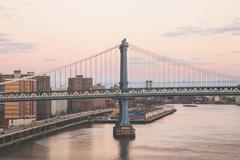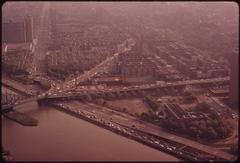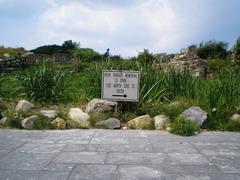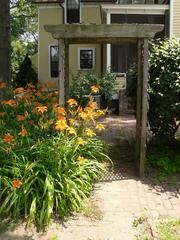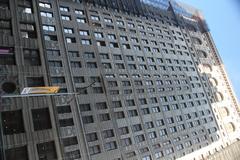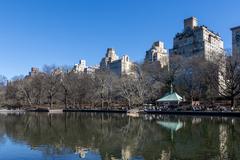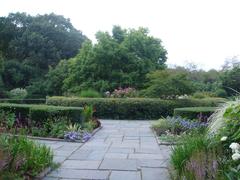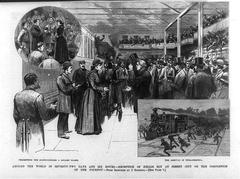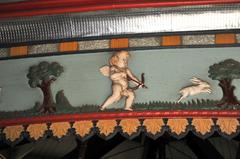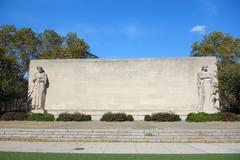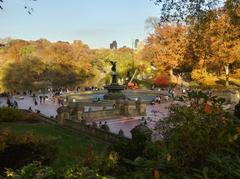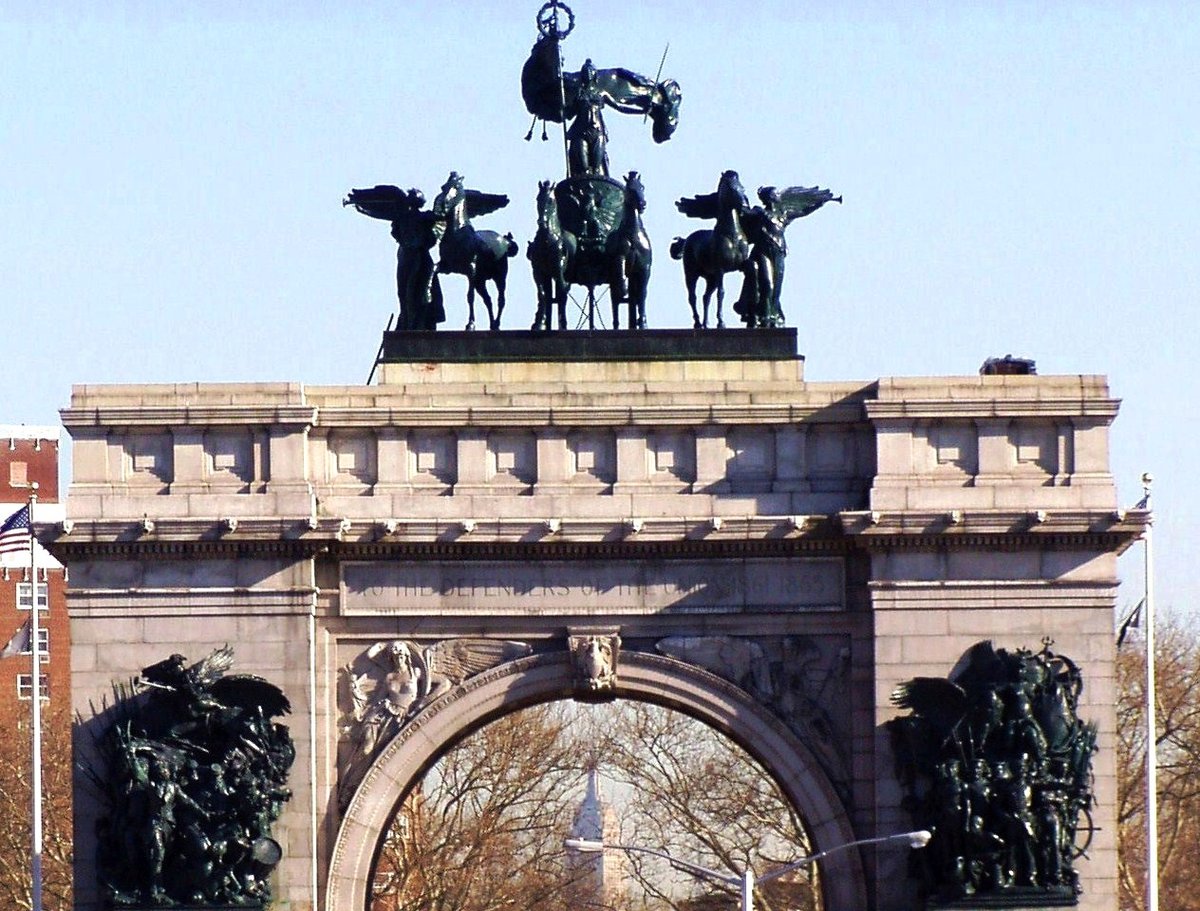
Comprehensive Guide to Visiting Soldiers’ and Sailors’ Arch, New York City, United States
Date: 31/07/2024
Introduction
The Soldiers’ and Sailors’ Arch, located in Brooklyn’s Grand Army Plaza, stands as a monumental tribute to the Union soldiers and sailors who fought in the American Civil War. Designed by John Hemenway Duncan and completed in 1892, this neoclassical masterpiece is a symbol of American resilience and unity (Wikipedia). The arch draws its architectural inspiration from ancient Roman triumphal arches, particularly the Arch of Titus, and features intricate sculptural elements by renowned artists such as Frederick MacMonnies, Thomas Eakins, and Philip Martiny (American Landmarks). As a focal point of Grand Army Plaza, it not only serves as a historical monument but also plays a significant role in Brooklyn’s cultural and civic life. This comprehensive guide aims to provide visitors with essential information, including the arch’s history, visiting hours, ticket prices, nearby attractions, and more, to ensure a memorable experience.
Table of Contents
- Introduction
- History of the Soldiers’ and Sailors’ Arch
- Visiting Information
- Nearby Attractions
- Conclusion
- FAQ
History of the Soldiers’ and Sailors’ Arch
Origins and Purpose
The Soldiers’ and Sailors’ Arch, located at the southern end of Grand Army Plaza in Brooklyn, New York City, was conceived as a memorial to honor the Union soldiers and sailors who fought in the American Civil War. The arch was designed by John Hemenway Duncan and constructed between 1889 and 1892 (Wikipedia). This monumental structure stands as a testament to the sacrifices made during one of the most tumultuous periods in American history.
Architectural Design and Influences
The design of the Soldiers’ and Sailors’ Arch draws heavily from classical architecture, particularly the triumphal arches of ancient Rome. The most direct inspiration for the arch was the Arch of Titus in Rome, which also influenced the Arc de Triomphe in Paris (American Landmarks). The arch is constructed from granite and measures 80 feet in height and width, with an archway opening that is 50 feet tall and 35 feet wide (Wikipedia).
Sculptural Elements
The Soldiers’ and Sailors’ Arch is adorned with several significant sculptural elements crafted by prominent artists of the late 19th century. The spandrels were created by Philip Martiny, while the equestrian bas-reliefs were the work of Thomas Eakins and William Rudolf O’Donovan. The arch also features three sculptural groups by Frederick MacMonnies, including the Quadriga, which crowns the top of the structure (Wikipedia).
Dedication and Public Reception
The dedication ceremony for the Soldiers’ and Sailors’ Arch was a grand event, capturing the attention of the entire city. The front page of the Brooklyn Daily Eagle was filled with coverage of the event, including detailed illustrations of the celebratory parade that marched beneath the arch (American Landmarks). The arch was dedicated to “The Defenders of the Union,” and it quickly became a cherished landmark in Brooklyn.
Cultural and Historical Significance
The Soldiers’ and Sailors’ Arch is not only a memorial to the Civil War but also a reflection of the cultural and artistic influences of its time. The neoclassical design of the arch is indicative of the broader City Beautiful Movement, which sought to introduce beautification and monumental grandeur to American cities (American Landmarks). This movement was inspired by the classical traditions of ancient Rome and Greece, as well as the neoclassical architecture of Europe.
Artistic Contributions
The arch is a veritable museum of late 19th-century American art and architecture. John Duncan, the architect, collaborated with some of the most renowned artists of the era, including Stanford White, Philip Martiny, Frederick MacMonnies, Thomas Eakins, and William Rudolf O’Donovan (American Landmarks). Their combined efforts resulted in a monument that is both artistically significant and historically meaningful.
Iconography and Symbolism
The iconography of the Soldiers’ and Sailors’ Arch is rich with symbolism. The equestrian bas-reliefs of Ulysses S. Grant and Abraham Lincoln evoke the heroic imagery of European equestrian statues, yet they retain a distinctly American simplicity (Wikipedia). The allegorical sculptural groups represent themes of victory, unity, and peace, encapsulating the ideals for which the Union soldiers and sailors fought.
Visiting Information
Visiting Hours
The Soldiers’ and Sailors’ Arch is accessible to the public 24 hours a day, seven days a week. However, the best time to visit is during daylight hours to fully appreciate the architectural details and sculptures.
Tickets and Admission
There is no admission fee to visit the Soldiers’ and Sailors’ Arch. It is a public landmark, and visitors can enjoy its grandeur without any cost.
Accessibility
The arch is located in a public plaza that is wheelchair accessible. Visitors with mobility concerns can easily navigate the area surrounding the arch.
Guided Tours and Events
Occasionally, guided tours and special events are organized at the Grand Army Plaza, which includes the Soldiers’ and Sailors’ Arch. For up-to-date information on tours and events, visitors can check the official NYC Parks website.
Nearby Attractions
- Brooklyn Museum: Located just a short walk from the arch, the Brooklyn Museum offers a vast collection of art and exhibits.
- Prospect Park: Adjacent to Grand Army Plaza, Prospect Park provides a beautiful green space for relaxation and recreation.
- Brooklyn Botanic Garden: A tranquil garden nearby, perfect for a leisurely stroll among diverse plant species.
Conclusion
In summary, the Soldiers’ and Sailors’ Arch is not just a monument but a symbol of American resilience and unity. Its classical design, rich iconography, and artistic contributions make it a significant landmark in New York City. Plan your visit today to experience this historic landmark.
FAQ
What are the visiting hours for the Soldiers’ and Sailors’ Arch?
The arch is accessible 24 hours a day, seven days a week, but is best visited during daylight hours.
How do I get tickets for the Soldiers’ and Sailors’ Arch?
There is no ticket required; it is free to visit.
Is the Soldiers’ and Sailors’ Arch wheelchair accessible?
Yes, the area around the arch is wheelchair accessible.
Are there guided tours available?
Yes, guided tours are occasionally available. Check the official NYC Parks website for the latest information.
References
- Soldiers’ and Sailors’ Arch, Wikipedia (Wikipedia)
- Soldiers and Sailors Memorial Arch, American Landmarks (American Landmarks)
- Grand Army Plaza, NYC Parks (NYC Parks)
- Brooklyn Daily Eagle, Brooklyn Public Library (Brooklyn Public Library)
- Grand Army Plaza, StreetEasy (StreetEasy)
- City Beautiful Movement, Classical Receptions Journal (Classical Receptions Journal)
- Prospect Park Alliance (Prospect Park)

